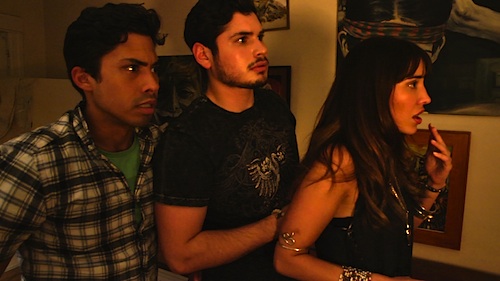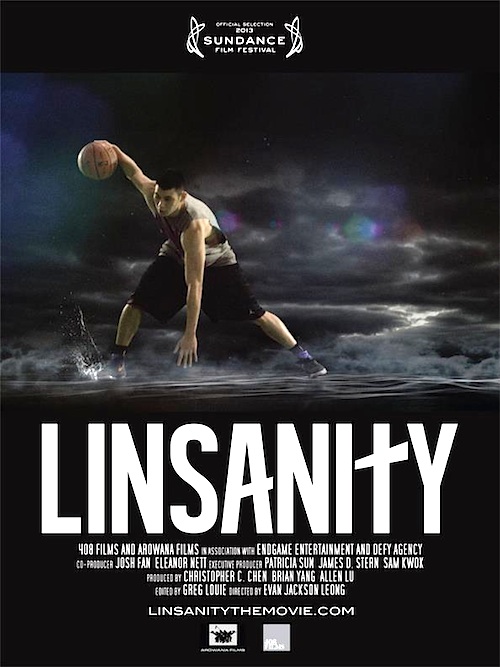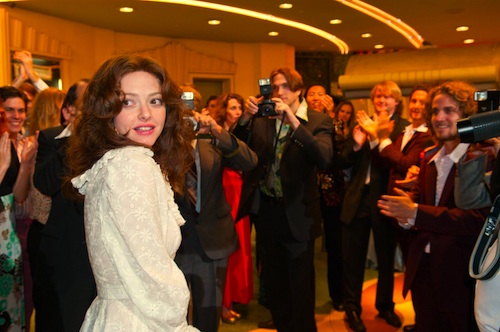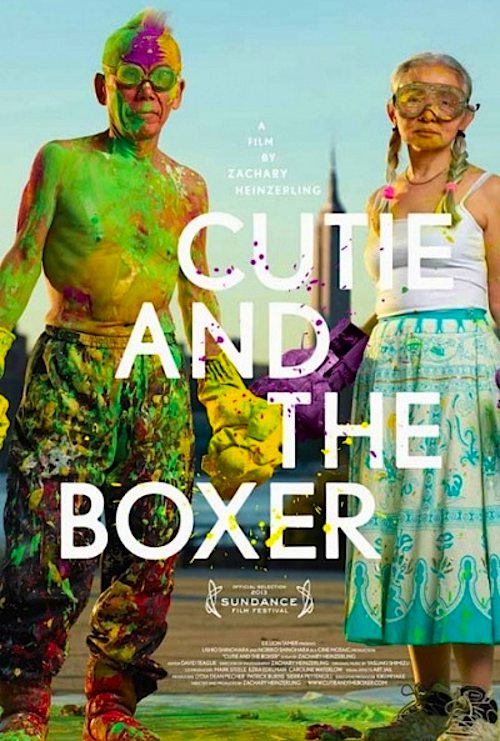By Joe Bendel. When two slackers discover that the house they share is haunted, they try to use this novelty to score with a ghost-crazy chick. If this seems like an inappropriate response, then you are probably not a dude in his 20’s. Or 30’s. Or maybe even 40’s. Intellectually and emotionally, Brad and Sergio are barely adolescents, decidedly out of their depth in Scott Rutherford & Ben Peyser’s found footage horror spoof Ghost Team One (trailer with all kinds of profanity here), which screened during the 2013 Slamdance Film Festival in Park City.
When Sergio has a strange, unexplained experience during a kegger, Brad assumes he was just drunk—because he was. However, the two decide to become amateur ghost chasers when they learn Fernanda, their very attractive party guest, is obsessed with the paranormal. It turns out that their house was once a notorious brothel, whose madam disappeared under mysterious circumstances.
As recorded by Billy Chen, their unseen Craigslist videographer, the lads go about documenting their ghost, a la Paranormal Activity. However, they are far more interested in putting the moves on Fernanda. It is not exactly Noel Coward’s Blithe Spirit, but there are plenty of laughs to be mined from this basic premise, with Brad and Sergio essentially serving as the horndog versions of Scooby and Shaggy.

As Brad and Sergio, Carlos Santos and J.R. Villarreal play off each other quite nicely and have a real flair for raunchy stoner humor. Fernanda Romero is a charismatic screen presence, who credibly portrays her namesake’s willing obliviousness to the all the lust focused at her. However, Tony Cavalero frequently upstages everyone as Chuck, the aggressively uptight third housemate.
It probably cost Rutherford and Peyser more to travel to Park City than to make Ghost Team One. Nonetheless, there are moments of genuinely inspired gross-out humor, including a climax so demented viewers have to see it for themselves because words fail. Those who enjoy taste-defying humor with supernatural trappings should keep an eye out for Ghost Team One. It is bound to find an appreciative audience after its world premiere at this year’s Slamdance.
LFM GRADE: B
Posted on January 30th, 2012 at 11:06am.








